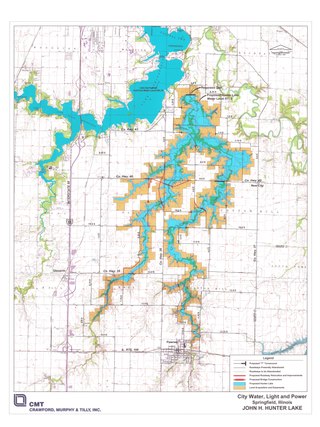Related Research Articles

The Islamabad Capital Territory is the only federal territory of Pakistan and contains Islamabad, the capital of Pakistan. Located on the northern edge of the Pothohar Plateau and at the foot of the Margalla Hills, The ICT shares borders with the province of Khyber Pakhtunkhwa in the west and with the province of Punjab in the remaining directions. It covers an area of 906.5 square kilometres and according to the 2023 national census, has a population of over 1 million in the city proper, while over 2 million in the whole territory. The territory is represented in the National Assembly by NA-52, NA-53, and NA-54 constituencies and by four seats in the Senate.

Islamabad is the capital city of the Islamic Republic of Pakistan. It is the country's ninth-most populous city with a population of over 1.2 million people and is federally administered by the Pakistani government as part of the Islamabad Capital Territory. Built as a planned city in the 1960s and established in 1967, it replaced Karachi as Pakistan's official national capital.

Nagarjuna Sagar Dam is a masonry dam across the Krishna River at Nagarjuna Sagar which straddles the border between Palnadu district in Andhra Pradesh and Nalgonda district in Telangana. The dam provides irrigation water to the districts of Palnadu, Guntur, Nalgonda, Prakasam, Khammam, Krishna, and parts of West Godavari. It is also a source of electricity generation for the national grid.
Diamer-Bhasha Dam is a concreted-filled gravity dam, in the preliminary stages of construction, on the River Indus between Kohistan district in Khyber Pakhtunkhwa and Diamer district in Gilgit Baltistan, Pakistan administered Kashmir. Its foundation stone was laid by the then Prime Minister of Pakistan in 1998. The dam site is situated near a place called "Bhasha", hence the name which is 40 km downstream of Chilas town and 315 km from Tarbela Dam. The eight million acre feet (MAF) reservoir with 272-metre height will be the tallest roller compact concrete (RCC) dam in the world.

Haro is the name of a river that flows through Khyber Pakhtunkhwa and parts of Punjab. It is a left tributary of the Indus. Its main valley is in Abbottabad District in the Hazara Division of Khyber Pakhtunkhwa province, northern Pakistan. The famous Khanpur Dam has been built on this river at Khanpur in the Haripur District of Hazara Division to provide drinking water to the twin cities i.e. Islamabad and Rawalpindi. The decrease in inflows of Khanpur dam from Haro River results in water shortage in the twin cities during summer season.

Ghazi-Barotha Hydropower Project is a 1,450 MW run-of-the-river hydropower, connected to the Indus River. It is located about 10 km (6.2 mi) west of Attock in the Punjab province and east of Haripur in the Khyber Pakhtunkhwa province of Pakistan. Construction of the project began in 1995. It consists of five generators, each possessing a maximum power generation capacity of 290 MW. The inauguration of the plant took place on 19 August 2003, presided over by the then President General Pervez Musharraf. It also saw the commissioning of the first two of the five generators i.e. Unit 1 and Unit 2. The last generator was commissioned on 6 April, 2004, and the project was completed by December the same year. It costed US$2.1 billion with funding from Pakistan's Water and Power Development Authority, the World Bank, Asian Development Bank, Japan Bank for International Cooperation, Kreditanstalt für Wiederaufbau, European Investment Bank and Islamic Development Bank.

The Sialkot-Lahore Motorway (M11) is a north-south motorway in Punjab, Pakistan, which connects Sialkot to Lahore via eastern parts of the Punjab. The total length of this motorway is 103 km. It was opened on 18 March 2020 at the cost of 44 billion rupees. It has reduced the travel time between Sialkot and Lahore to just 50 minutes instead of the alternative route via N-5 comprising 145 km and taking more than 2 hours. This new road connects the Sialkot and Lahore Airport junctions with an express travel mode of 1 hour, and would uplift the Sialkot city and the surrounding rural hinterlands.
Drinking water supply and sanitation in Pakistan is characterized by some achievements and many challenges. In 2020, 68% Pakistanis, 72% Indians, 54% Bangladeshi had access to the basic sanitation facilities. Despite high population growth the country has increased the share of the population with access to an improved water source from 85% in 1990 to 92% in 2010, although this does not necessarily mean that the water from these sources is safe to drink. The share with access to improved sanitation increased from 27% to 38% during the same period, according to the Joint Monitoring Program for Water Supply and Sanitation. There has also been considerable innovation at the grass-root level, in particular concerning sanitation. The Orangi Pilot Project in Karachi and community-led total sanitation in rural areas are two examples of such innovation.

Islamabad is located in the Pothohar Plateau in the northern part of Pakistan, within the Islamabad Capital Territory. It is a well-organized city divided into different sectors and zones. It was ranked as a Gamma + world city in 2020. The city is home to Pakistan Monument, which is built on top of a hill in Shakarparian, and the Faisal Mosque, one of the largest mosques in South Asia and the sixth -largest mosque as per area in the world. The Capital Development Authority is tasked with developing the city and its facilities.

Hunter Lake is a proposed 2,649-acre (10.72 km2) reservoir to be created in Illinois, United States, by damming Horse Creek, a tributary of the Sangamon River. If the lake is built, its construction would flood a section of bottomland in southeastern Sangamon County, Illinois near the city of Springfield, between two other lakes, Lake Springfield and Lake Sangchris, to an elevation of 568.7 feet above sea level. See, http://supplementalwater.cwlp.com/Documents.aspx p. 2-22. The lake is a project of City Water, Light & Power, the local municipal electric utility.
DHA Valley is a subdivision of Defence, Islamabad.

The Spavinaw Water Project was established to provide fresh water for Tulsa, Oklahoma from a site on Spavinaw Creek near the town of Spavinaw in Mayes County, Oklahoma. Planning and financing began in 1919, The project scope included site selection, designing and constructing a dam to impound the creek, a 55-mile long pipeline to carry water to a reservoir near Tulsa, where it would be treated and pumped to a network of customers. Groundbreaking occurred in October, 1922. The dam and pipeline were both completed in 1924, and the new Tulsa water treating plant was completed in 1929. At that time, this was the longest gravity-flow water pipeline operational in the United States.

Zero Point Interchange is a large cloverleaf interchange in Islamabad, Pakistan. It is located at the intersection of Islamabad Highway, Srinagar Highway, and Khayaban-e-Suharwardy. It was inaugurated in 5 July 2011, and has an estimated life of 30 years.
Mangi Dam is located near Ziarat in Balochistan, Pakistan. The dam was constructed in 1982 and has a height of 18 m (59 ft) and storage capacity of 130,000 m3 (105 acre⋅ft). It was constructed at a cost of US$36.88 million. It was made to stop the fish from leaving the fishing area. In 2015 it is announced that the dam will also produce electricity and the shortage of load shedding will also reduce.

B-17 is a sector of Islamabad, Pakistan., developed by Multi-Professional Cooperative Housing Society (MPCHS). The sector is bounded on the east by N-5 National Highway and with the M-1 motorway to the west. B-17 is a newly developing sector located in Zone II of Islamabad Capital Territory. CDA approved and issued no objection certification (NOC) to MPCHS for sector B-17 on 30 January 2008, besides NOC was issued by Federal Directorate of Education (FDE) for construction of schools in the society.

The Rawalpindi-Islamabad Metrobus is a 83.6 km (51.9 mi) bus rapid transit system operating in the Islamabad–Rawalpindi metropolitan area of Pakistan. It consists of four routes, namely the Red, Orange, Blue, and Green Lines. The Red and Orange Lines have dedicated lanes with proper stations built along them, while the Blue and Green Lines currently run along the Islamabad Expressway and Srinagar Highway respectively, with regular traffic.
The K-IV water project, abbreviated as K-IV, is a pending water supply project being jointly developed by the provincial and federal governments in Karachi, Pakistan, to augment the city's daily water supply. The estimated cost was approximately Rs25.5 billion, which now increased to 150 billion PKR, while the project is designed to provide 650 million gallons of water daily to Karachi in three phases. The new water supply will be extracted from Keenjhar Lake through three water canals. The project was slated for completion in mid-2019. The K-IV water project is part of Karachi Bulk Water Supply Project.
Dadhocha Dam is a proposed dam which is to be built near Dadhocha village in Rawalpindi, Pakistan. The dam is intended to address the water scarcity issues in Rawalpindi and Islamabad.

The Margalla Avenue or Margalla Expressway is a 33-kilometer six-lane highway in the Margalla Hills area in the suburbs of Islamabad, Pakistan. It was planned in 1966, but work on it was stalled till 2021. The road is an alternative to the Srinagar Highway, and provides easy access of the tenth and eleventh sectors of Islamabad to the N-5 National Highway. This road is a crucial section of the larger Rawalpindi Ring Road project as it connects the town of Sangjani to the town of Barakahu.
Karnal Sher Khan Shaheed Road, previously known as the IJP Road, or the Inter-Junction Principal Road, is one of the busiest roads in the Islamabad–Rawalpindi metropolitan area in Pakistan, connecting Islamabad to Rawalpindi. It also serves as a route for traffic coming from Punjab and Azad Kashmir going towards Taxila, Attock, and onwards to Khyber Pakhtunkhwa. It is named IJ Principle Road because it is the road that was going to be between the never-built Sector J and Sector I of Islamabad.
References
- ↑ "Mega water project far from taking off". The Express Tribune. November 29, 2023.
- ↑ "Wasa Proposes Ghazi Barotha Water Supply Project for Twin Cities' Water Needs - ProProperty".
- ↑ "CDA Urges Investment in Water-Related Projects Instead of Roads and Interchanges - ProProperty".
- ↑ "WASA seeks leg up for 'mega' water project". The Express Tribune. June 17, 2023.
- ↑ "Drought sparks water shortage fears". 8 January 2024.
- ↑ "100MGD water from Ghazi Barotha Dam to Islamabad: CDA-PCRWR sign MoU on technical support, supply".
- ↑ https://pcrwr.gov.pk/consultative-meeting-on-demonstration-of-nature-based-solution-for-improving-the-resilience-of-groundwater/
- ↑ "Wasa asks Punjab to bear only 25pc cost of Ghazi Barotha water project". 14 December 2021.
- ↑ "WASA seeks leg up for 'mega' water project". 17 June 2023.
- ↑ "PC-1 of Ghazi Barotha project okayed". 5 December 2021.
- ↑ "Drought sparks water shortage fears". The Express Tribune. January 8, 2024.
- ↑ "Mega water project for twin cities scrapped". The Express Tribune. July 5, 2023.
- ↑ "Govt To Initiate Rs 150b Project Of Water Supply To Federal Capital From Ghazi Barotha Dam: Ali Nawaz". UrduPoint.